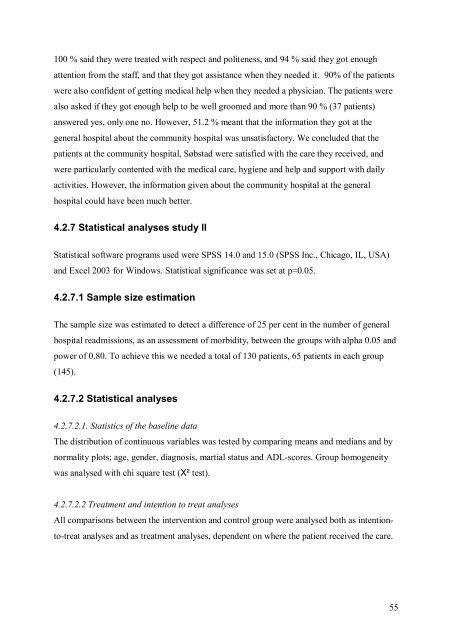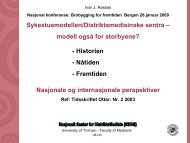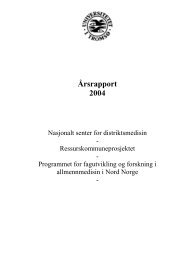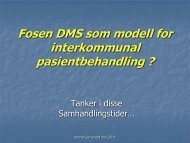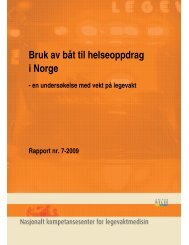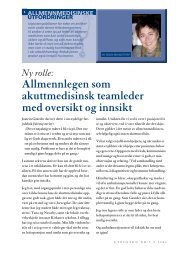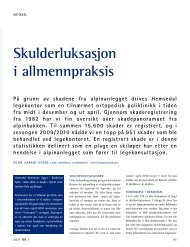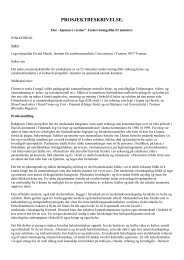Helge Garåsen The Trondheim Model - NSDM
Helge Garåsen The Trondheim Model - NSDM
Helge Garåsen The Trondheim Model - NSDM
You also want an ePaper? Increase the reach of your titles
YUMPU automatically turns print PDFs into web optimized ePapers that Google loves.
100 % said they were treated with respect and politeness, and 94 % said they got enough<br />
attention from the staff, and that they got assistance when they needed it. 90% of the patients<br />
were also confident of getting medical help when they needed a physician. <strong>The</strong> patients were<br />
also asked if they got enough help to be well groomed and more than 90 % (37 patients)<br />
answered yes, only one no. However, 51.2 % meant that the information they got at the<br />
general hospital about the community hospital was unsatisfactory. We concluded that the<br />
patients at the community hospital, Søbstad were satisfied with the care they received, and<br />
were particularly contented with the medical care, hygiene and help and support with daily<br />
activities. However, the information given about the community hospital at the general<br />
hospital could have been much better.<br />
4.2.7 Statistical analyses study II<br />
Statistical software programs used were SPSS 14.0 and 15.0 (SPSS Inc., Chicago, IL, USA)<br />
and Excel 2003 for Windows. Statistical significance was set at p=0.05.<br />
4.2.7.1 Sample size estimation<br />
<strong>The</strong> sample size was estimated to detect a difference of 25 per cent in the number of general<br />
hospital readmissions, as an assessment of morbidity, between the groups with alpha 0.05 and<br />
power of 0.80. To achieve this we needed a total of 130 patients, 65 patients in each group<br />
(145).<br />
4.2.7.2 Statistical analyses<br />
4.2.7.2.1. Statistics of the baseline data<br />
<strong>The</strong> distribution of continuous variables was tested by comparing means and medians and by<br />
normality plots; age, gender, diagnosis, martial status and ADL-scores. Group homogeneity<br />
was analysed with chi square test (X² test).<br />
4.2.7.2.2 Treatment and intention to treat analyses<br />
All comparisons between the intervention and control group were analysed both as intentionto-treat<br />
analyses and as treatment analyses, dependent on where the patient received the care.<br />
55


